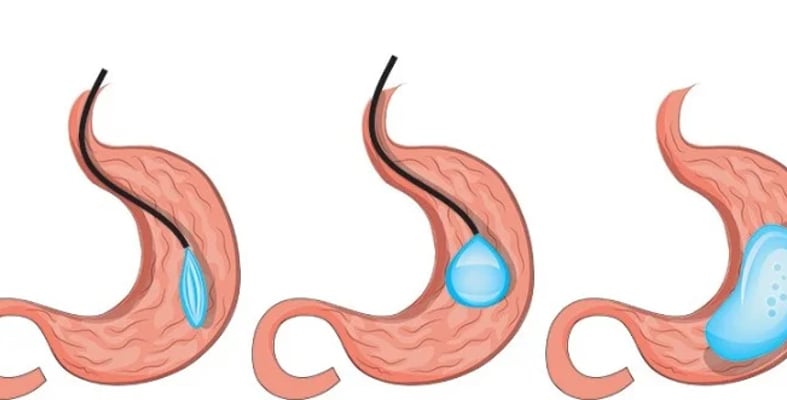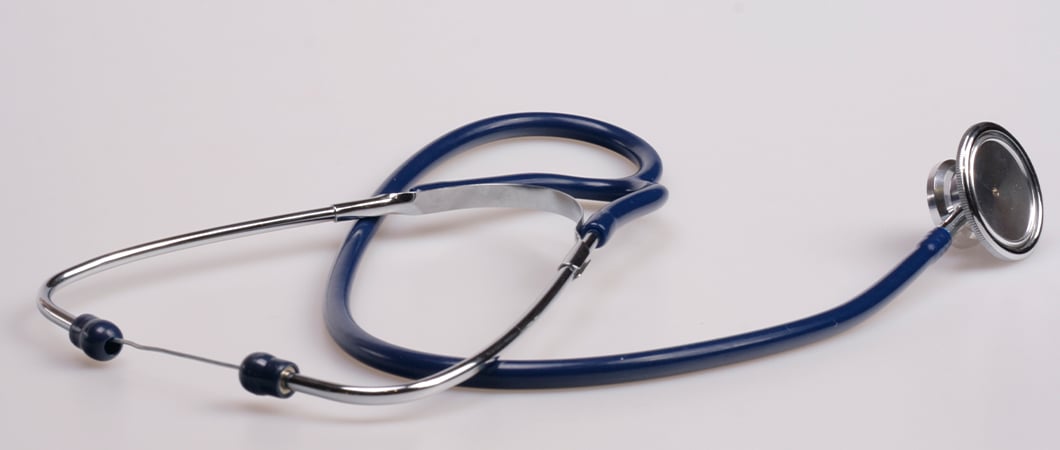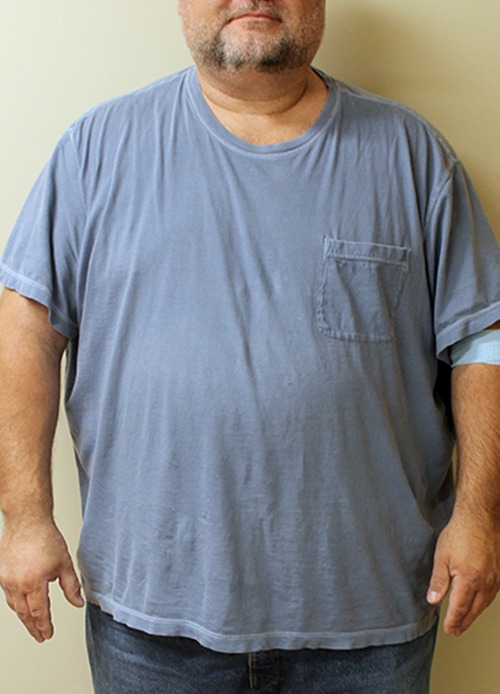Intragastric Balloon

Intragastric balloon or stomach balloon is one of the revolutionary ideas in the field of bariatrics and weight loss procedures. Intragastric balloon is basically a light and flexible saline-filled balloon, this balloon is made of silicon, and it works by limiting the amount of food obesity patient can consume by helping them feel full faster and easier.
Table of content
The bariatric surgeon places an intragastric balloon into the stomach lumen through a simple medical procedure using endoscopy, which is a nonsurgical procedure, as intragastric balloon placement does not require surgery, as is the case with other procedures for obesity management.
There are several types of intragastric balloons used to treat obesity problem in patients with a BMI between 30 and 35 kilograms per square meter who complain of one or more of the obesity-associated comorbidities, such as type II diabetes, high blood pressure, or elevated blood sugar, especially those who have failed to lose weight by diet and exercise.
What Is Intragastric Balloon?
Intragastric balloon is a soft silicon balloon filled with 400 to 700 milliliters of saline solution, this balloon is placed into the stomach using medical endoscope, which is a flexible tube with a light and camera on its tip that goes through the mouth down to the stomach.
Intragastric balloon usually stays inside the stomach cavity for 6 months, after this period, its volume begins to shrink gradually and it must be removed to avoid complications such as slipping into the duodenum and associated bowel obstruction, and removal of the stomach balloon is also performed using an endoscope.
How Does Intragastric Balloon Work?
As in the case of gastric banding, gastric balloon is a completely restrictive procedure that restricts the amount of food a patient can eat before feeling full, without causing any complications, such as poor absorption or malnutrition, as in some other bariatric procedures used to treat obesity.
What Are The Possible Adverse Effects Associated With Intragastric Balloon?
Some of the side effects that can occur after intragastric balloon placement are nausea, and sometimes vomiting, gastroesophageal reflux disease, or balloon intolerance. In some patients, the balloon can leak and this can lead to faster shrinkage of the balloon.
More about: Capsule Endoscopy
To address the balloon leaking problem, the balloon is often filled with a saline solution that contains a blue dye, when the urine changes to blue or sometimes to green, this shows that there is a balloon leak, and you need to see the doctor to remove it before it can slide into the small intestine.
The problem of balloon leak has been solved with the new generation of intragastric balloons, as a new kind of stomach balloons -called ReShape®- has emerged, which is a dual balloon system, meaning that if one of the two leaks, the other balloon remains intact to prevent any complications.


Weight Loss after Intragastric Balloon
In a study that was conducted on 326 obesity patients, intragastric balloon was placed in 50% of cases, and the others have had a medical endoscope without any intervention.
Read more: What is a smart capsule?
Weight loss in the patient group in which balloon was placed was 7% of body weight over a short period, compared to about 3% in the other group. Intragastric balloon group was assessed after two years of the intervention to find that they had lost 25% of their weight.
Other statistical studies reported 33% of excess weight loss in patients treated with intragastric balloon.
Gastric balloon complication
The gastric balloon operation is one of the Bariatric operations, and like other operations in this context, some potential complications and side effects arise from performing this operation, and these complications include the following:
- Feeling of imbalance.
- A heavy feeling in the abdomen.
- Abdominal or back pain.
- Acid reflux or indigestion.
- Balloon rupture.
- Injury during balloon insertion or removal.
Gastric balloon removal
After sufficient time of the gastric balloon, and getting rid of the patient’s excess weight, the stage of removing the gastric balloon comes, it is usually removed six months after the procedure, as for the method of removing this balloon, it is by using an endoscope through an endoscopy.
where the balloon is deflated and held and removed with a handle, to be passed down a tube, and taken out through the mouth. The patient may take a sedative pill or a mild anesthetic before the gastric balloon is removed.
Diet after balloon surgery
In such types of operations, doctors provide some important advice and instructions, which the patient must follow until the treatment period is complete, and one of the most important advice provided in the gastric balloon surgery is the diet that the patient is supposed to follow after the operation.
This diet, which will be after inserting the gastric balloon, will depend on drinking liquids only for the first three days, and then the patient will start eating soft foods, until the tenth day in the post-operation phase, then the patient can eat usual diet again.
Also, this strict diet the patient will follow will allow your body to adapt to the balloon, prevent dehydration, and maintain your energy levels.
Do you have an inquiry? Contact us - For FREE Consultation.
Ilajak Medical | A passion for care




Treatment Services
In the Best Medical Centers
Contact Us
Please fill the form below and describe your condition, We will contact you back
- Dental Treatment
- Hair Transplant
- Obesity Surgery
- Vision Correction
- Health Resorts
- Other Medical Services
- No elements found. Consider changing the search query.
- List is empty.
Your personal data is processed as indicated in the general statement text and by continuing, you explicitly consent to the processing







